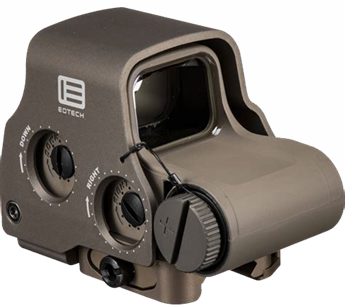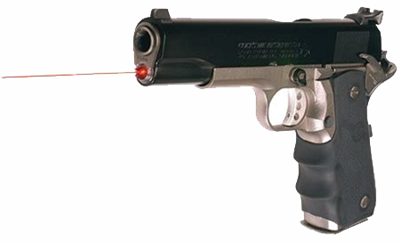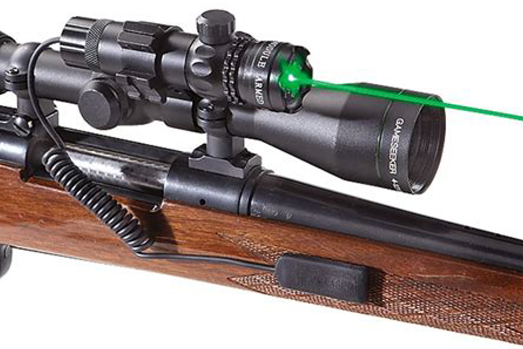
Electronic sight systems produce an illuminated sight picture that helps the shooter achieve the intended point of impact. This type of sight is commonly called a red-dot sight. This term is used even though the illuminated aiming point can be red, green, crosshairs or any other focal point the shooter uses to hit his or her intended target.
The biggest advantage of electronic sight systems is fast target acquisition. There are some that also magnify your target. Electronic sight systems are evolving rapidly and shooters have quickly embraced these new optics. However, many aren’t aware of the variety of electronic sight systems available to them.
Consumers need to know the difference between electronic sights to choose the right optic for their needs. There are four types of electronic sight systems on the market today: reflex sights, prism sights, holographic sights and laser sights.
Reflex Sights
The reflex sight is the most common type of electronic sight system. In a reflex sight a small reticle—red dot, green dot, crosshairs, etc.—is projected onto the lens that the shooter looks through. The shooter sees the reticle when they align the sight with his or her intended target. The reflex sight projects the reticle in front of the target in the scope, therefore when the target is in focus, the reticle is in focus.

Most reflex sights have a small glass window that the image of the reticle is shown upon. This type of reflex sight does not have a tube body. Reflex sights that have two glass windows have a small body tube that connects them. The image of the reticle is encased between the two windows and the reticle image is projected from the rear window to the forward window.
Reflex sights usually do not have any magnification. As a result, theses sights are also the most affordable on the market. Reflex sights usually have a minimum amount of parallax or none at all. Parallax is the movement of a sight’s reticle in relation to the target as the shooter moves his or her head while looking through the optic. Reflex sights are great for quick acquisition of targets.
Prism Sights 
Prism sights are short-tubed optics. The prism sight uses a prism, not lenses as in traditional scopes, to focus the image you see. A prism is a glass or other transparent object that refracts the light at acute angles to separate the light emitting from an object into a spectrum of colors. This gives the shooter a very clear and sharp image of the target.
Prism sights usually have a variable magnification option. The magnification of these sights is on the low end at 3x to 6x. The magnification of this type of electronic sight system extends the range of the firearm, making it a perfect fit for today’s modern sporting rifles.
Prism sights are also a great option for shooters with an astigmatism or other eye condition. The diopter on the sight can be adjusted for each shooter’s particular vision. This can also help with parallax.
The benefits of the prism sight also give rise to its biggest disadvantage. The prism sight is more expensive than a reflex sight. This is because of the precision of the reflective surfaces within the optic that makes the sight picture brighter, crisper and sharper. Another disadvantage is that this type of sight requires a short distance between the shooter’s eye and the eyepiece of the optic; this distance is referred to as eye relief. In order to obtain a proper sight picture, the shooter must be closer to the optic.
Holographic Sights
Holographic sights work by transmitting a holographic image of the reticle superimposed on the field of view as seen through the optic. The hologram is illuminated by a laser diode inside the optic. This reticle stays on the intended target regardless of the position of the head or firearm, as long as the shooter is looking through the sight. This takes care of the parallax that might be experienced in traditional scopes.

A holographic sight transmits the image of a reticle back to the shooter’s eye by a reflective surface. The reticle of this sight seems to float in the field of view. The image that the shooter sees is an exact copy of the target. The components of a holographic sight are a collimating reflector, laser diode, holographic grating, reticle image hologram and holographic image.
Holographic sights are much more expensive than reflex sights. On the plus side, this is due to the high quality of the internal components, so the consumer is getting their money’s worth.
Laser Sights 
Laser sights emit a laser parallel with the barrel of the firearm. This laser is aimed to cover the point of impact on a target. Laser sights work like a laser pointer. Place the laser where you want the bullet to go. The lasers used on firearms are either a red or green light.
There are benefits to both red and green laser sights. Lasers have an operating temperature range. Red lasers are cheaper than green lasers, because they have a wider temperature range. Red lasers have an operating range of 15 degrees Fahrenheit and 120 degrees Fahrenheit. Red lasers do not operate as well in the daytime as opposed to the night. A red laser starts to dissipate rapidly in bright light. In a bright environment, the furthest operating range of red lasers is approximately 30 yards. Thirty yards is adequate for most self-defense situations, but at that distance the laser is very hard to see.

Green lasers are more effective in bright scenarios. This color laser has a narrower operating range. The range of a green laser is only between 40 degrees Fahrenheit to 100 degrees Fahrenheit. The upside of a green laser is it can be easily seen in bright conditions up to 100 yards.
Laser sights can be mounted in several locations, not just on top of the firearm like the other optics. Laser sights can be mounted on top and beneath the barrel or slide of a handgun. Laser sights can be grip mounted so when the shooter grips the firearm, the laser is automatically engaged or they can be turned on by a switch.
An optic is just as important and individual of a choice to a shooter as the firearm he or she chooses. Unfortunately, many gun owners put little to zero research in their optics as compared to the time researched to invest in the gun itself. There are pros and cons to each type of optic or variety of sights available to the gun owner. The right sight or optic should complement your firearm. This will be realized by a shooter in the performance of their gun of choice at the range and most importantly, in the confidence they will have in their firearm.














































